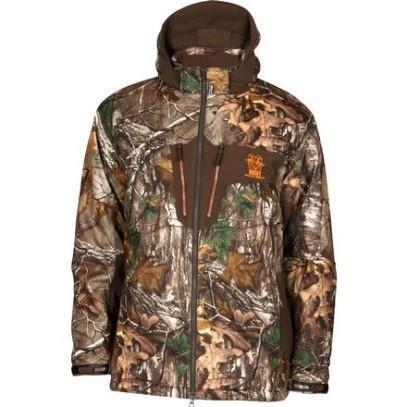Do You Hunt During the Late Season?
While my whitetail season's finished, this isn't the case in many regions. Many states offer last-chance bowhunting opportunities, while others invite you to continue bowhunting during general rifle seasons conducted well after the rut (like Kansas, where I've successfully bowhunted late season while wearing the required orange vest).
There are two basic rules of engagement in this business: Stay warm to stay in the game and follow food for success.
I used to bowhunt Nebraska in December each year. Outfitting/guiding in those days simply tied me up during prime November dates. What I remember most about those hunts is teeth-chattering shivering. That was before cold-weather attire turned high-tech, inviting strange approaches like wearing neoprene waders beneath so many layers of clothing I could hardly draw my bow.
Today, insanely-efficient base layers, like Cabela's Thermal Zone long underwear, for instance, heated clothing like Gerbing or Browning battery-powered vests or mid-layer garments holding puffy insulations, plus weather-turning outer layers with "wind-shield" laminates, make staying warm easy.
Rocky Athletic Mobility Waterproof Insulated Parka in Realtree Xtra
Don't Miss: 10 Feeding Habits of Mature Deer
Numb appendages used to be my biggest nemesis, but Thinsulate or Primaloft-insulated hand muffs (with chemical handwarmers added as needed) and quality pack boots like those from LaCrosse or Rocky (adding chemical toe warmers on the coldest mornings) have solved those problems for me. A friend recently quipped, "Have you ever noticed as we get older we seldom allow ourselves to get truly hungry?" I might add, as I've grown older I seldom allow myself to get truly cold.
Late-season whitetail stand sites invariably revolve around food. Bucks physically worn down from the feverish days of the rut must eat to replenish depleted reserves. Generally, all deer must fuel up when temperatures drop below freezing, stoking the internal furnace against killing hypothermia. Failing to do so results in agonizing death.
If you bowhunt where baiting's legal, hopefully you've reserved a spot for late season, leaving deer alone during earlier seasons so they'll feed during daylight hours later. Ditto food plots. Frost-resistant turnips are popular late-season fare, deer nibbling greens during earlier seasons, pawing up sweet tubers during late seasons, though in more temperate areas winter wheat, hardy clover and the like can act as a reliable food source. In other areas, agricultural waste or strips of row crops left standing -- soybeans and corn namely -- act as magnets when plunging temperatures send deer in desperate search of food.
Don't Miss: Kill a Late-Season Stud in 5 Days
In other regions, natural foods are more difficult to pin down -- left-over or late-falling acorns are always a good bet, the last of the fall's shriveled apple crop, the leaves of honeysuckle and green briars in warmer regions of the country.
Of course, like early season bowhunting, late-season strategies often come off better on paper than reality. Deer have often been subjected to months of non-stop hunting pressure, the herd thinned of less cautious deer. But, ultimately, there are some deer left out there somewhere, and they do have to eat to survive. And besides, what are you going to do when confronted by an unfilled tag? Give up?
Never!
Don't Miss: 20 Deer Hunting Lies Your Granddaddy Told You
Editor's Note: This was originally published December 11, 2012.
Are you a deer hunter thirsty for knowledge? Check out our stories, videos and hard-hitting how-to's on deer hunting.








